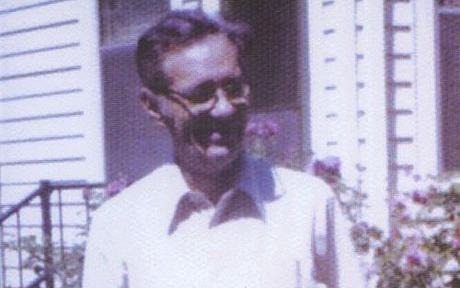The brain pictured below is considered to be the world’s most famous brain. It belonged to a man named Henry Gustav Molaison, known as “Patient HM,” who had a memory that lasted only a few minutes as a result of brain surgery conducted in 1953 that was intended to stop his severe epilepsy.
Mr Molaison’s brain sits in a plexiglass mold waiting to be embedded in gelatin, frozen, sliced, dyed, mounted, and finally scanned.
Henry Molaison was born on February 26, 1926 and suffered from intractable epilepsy that has been often attributed to a bicycle accident he suffered at the age of nine. Mr Molaison suffered from seizures for many years, before being referred to a neurosurgeon at Hartford Hospital, for treatment.
Henry Molaison underwent surgery in 1953, which although cured his epilepsy, destroyed his ability to create new memories - a condition known as anterograde amnesia. Henry Molaison lived for 55 years after his surgery without being able to form a single new memory and in that time was thoroughly studied by the scientific community for his condition.

H.M. Molaison, outside his family home in East Hartford, CT. taken in the 1970s
Henry Molaison’s brain is important because it allowed scientists to determine the exact part of the brain where memory function originates (the hippocampus) since that is the part of his brain that was removed. Despite this loss, Mr Molaison was still able to learn things, such as getting better at working through a maze, though he couldn’t remember having done the maze. He was also able to remember parts of his life from before the surgery, which showed that there all different types of memory (long term, short term, conscious, unconscious) and they are not all localized in the hippocampus. Before Henry Molaison, memory was a completely abstract concept.
When Henry Molaison died in December of 2008, his estate agreed to donate his brain to The Brain Observatory at UC San Diego. Since then, Mr Molaison’s brain has been sliced into 2,401 seventy-micron-thick slices and is currently being scanned at incredibly high resolution.
Henry Molaison's brain in a mold of gelatin
A sliced layer of Henry Molaison’s brain
This portrait of Henry Gustav Molaison was taken shortly before he underwent the experimental surgery.
















So this is where the idea for 50 First Dates came from, that's amazing, and tragic.
ReplyDeleteThat and other people which are like this NATURALLY.
ReplyDeleteAnd long before "50 Dates" came "Memento", a much better and much more intelligent film.
ReplyDelete